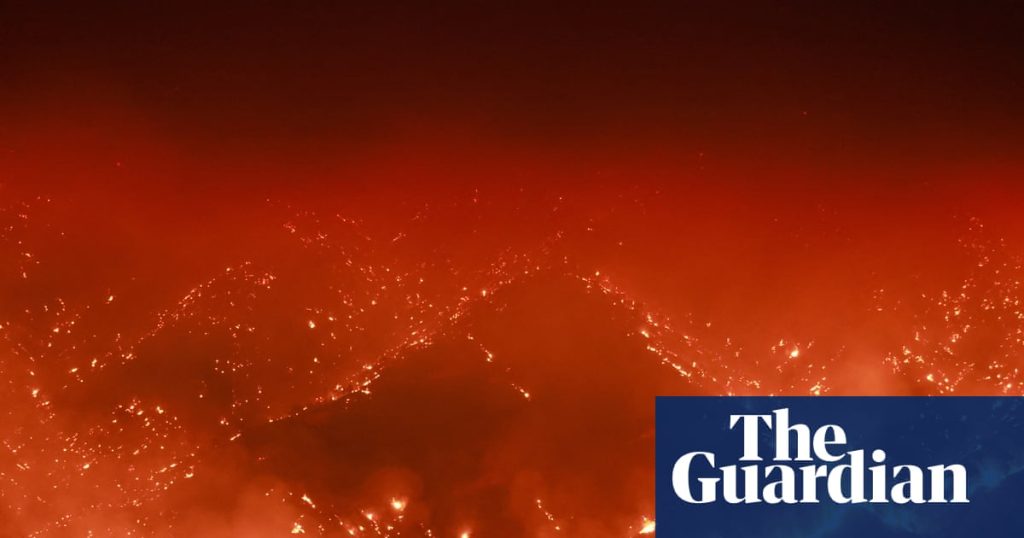The climate crisis will continue making lightning-sparked wildfires more frequent for decades to come, which could produce cascading effects and worsen public safety and public health, experts and new research suggest.
Lightning-caused fires tend to burn in more remote areas and therefore usually grow into larger fires than human-caused fires. That means a trend toward more lightning-caused fires is also probably making wildfires more deadly by producing more wildfire smoke and helping to drive a surge in air quality issues from coast to coast, especially over the past several years.
Over the last 40 years, thunderstorms and other weather conditions favoring lightning have been happening more often across many parts of the US west, including western Washington, western Oregon, the California Central valley, and higher elevations throughout the Rocky Mountains.
This trend isn’t just in the US. This year’s fire season has been the worst in European history, driven in part by lightning-caused wildfires in Spain. In Canada, huge fires this year have burned more than 200% of normal forest area, the vast majority of which were caused by lightning.
Despite the well-documented trend toward worsening fires, most climate models have been too coarse to resolve how the relationship between lightning and wildfires will change as the climate crisis deepens.
A new study published last week is the first to use machine learning techniques to tackle this problem, simultaneously looking at future changes in lightning frequency and changes in weather variables like air temperature, humidity, wind and soil moisture that can predict how likely a fire is to spread.
“The overall signal is that we will have more risk of lightning-caused fires,” said Dmitri Kalashnikov, a climate scientist at the Sierra Nevada Research Institute at University of California-Merced and the study’s lead author.
The findings come as this year’s wildfire season in the US is shifting into high gear in a manner eerily similar to what Kalashnikov imagines for the future – lurching forward after a series of dry thunderstorms tore through California earlier this week.
Thousands of lightning strikes this week have sparked at least 20 new fires and burned tens of thousands of acres across California’s Central valley and into the foothills of the Sierra Nevada, with one fire destroying several structures in the Gold Rush-era settlement of Chinese Camp east of Modesto.
Kalashnikov’s team found that some places, like the inland Pacific north-west, will see a surge of lightning with a relatively small increase in overall fire risk due to a moistening environment. Other places, like the desert south-west, will see an increase in wildfire risk without much of a change in the number of days with lightning due to an overall trend towards more pervasive drought.
Despite these regional differences, the result was clear: virtually everyone will be dealing with more wildfire risk in the future. In fact, Kalashnikov’s team found future increases in the number of lightning-caused wildfires across a robust 98% of the western US “due to more lightning, or more fire weather, or both”, he said.
In a future world with limited firefighting resources, the implications of more lightning-caused wildfires are worrying.
Over a recent 15-year span, wildfire smoke killed about a thousand people in the US each year. A surge in lightning-caused fires could cause America’s smoke epidemic to take the lives of potentially more than 20,000 people a year by mid-century.
In addition to the increase in wildfire risk, Kalashnikov’s study found the biggest impact from the expected increase in thunderstorms and lightning across some parts of the west could be an increase in flash flooding and mudslides, especially in recently burned areas. More smoke from more lightning-caused fires may also coat glaciers in Canada, Greenland and Europe with dark particles that can make them melt more quickly.
Due to their remote nature, lightning-caused wildfires also tend to drain emergency response capacity away from urban areas.
Even today, a sudden lightning storm “can stretch resources really, really thin” for weeks during peak wildfire season, said Max Moritz, a University of California Cooperative Extension wildfire specialist and adjunct professor at University of California-Santa Barbara.
“Maybe a week or two later you may have a big Santa Ana wind event,” said Moritz, “then you have a real recipe for catastrophe.”
When coupled with the trend of urbanization of wildfire-prone areas that we are seeing across the west, a world with worse wildfires could place additional pressure on the insurance industry which is digesting billions of dollars of claims from this year’s fires in Los Angeles alone.
In the US, firefighting resources are stretched thin nationwide as a result of the Trump administration’s cuts to the National Oceanic and Atmospheric Administration, the National Park Service and a host of other federal agencies with staff throughout the west. As of late July, more than one-quarter of all firefighting jobs remained vacant at the US Forest Service, and a recent immigration raid within an active firefighting crew in Oregon has reportedly reduced firefighter morale.
Moritz sees a possible partial solution – change the way we build cities in fire-prone regions.
In addition to instituting basic fire safety building codes, Moritz envisions agricultural buffers surrounding cities that could effectively shield homes and people from encroaching fire.
“There’s a growing awareness now that live fuel moisture, the amount of water in green living twigs and leaves, is also a really strong control on fire dynamics,” said Moritz. “That’s what we have here in Santa Barbara. We’ve got an existing old agricultural belt that’s relatively thin. In the places where it still exists, wildfires cannot sweep out of the national forest and into neighborhoods.”

